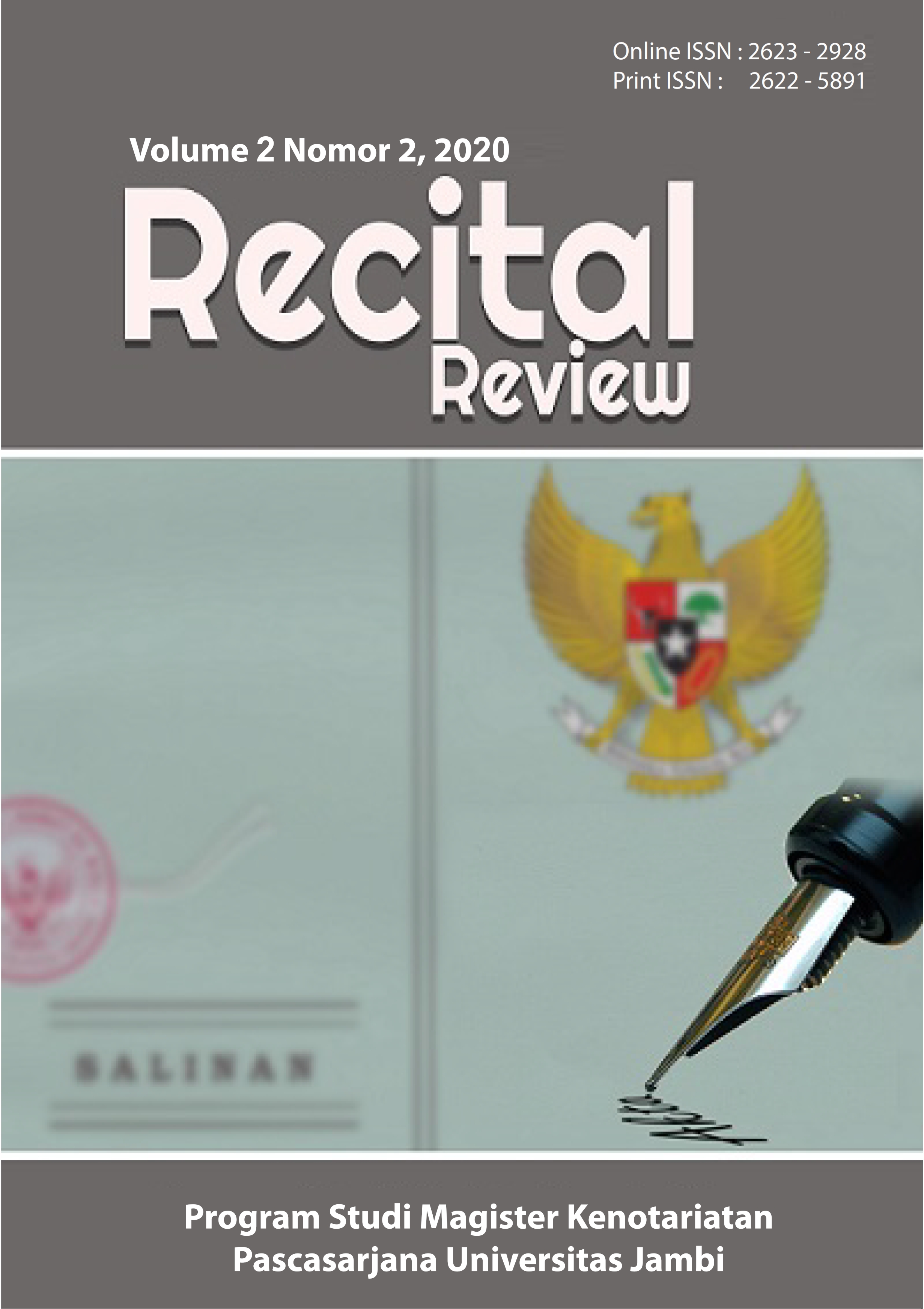Akibat Hukum Pencairan Kredit Yang Didasarkan Pada Covernote Notaris
DOI:
https://doi.org/10.22437/rr.v2i2.9043Abstract
The purpose of this study is to examine and analyze the legal consequences of credit disbursement based on covernote notaris. This type of research used in this study is normative juridical research using the law approach, conceptual approach, and case approach. The results of Covernote's research made on the basis of an agreement between the Notary and the Bank in disbursing credit are valid, but only have a position as a statement from the notary and have no legal power because there is no Notary's authority in making a Government. The legal consequence of credit disbursement based on Notary covernote is that if the management of mortgage rights cannot be completed in accordance with the covernote made by the Notary Public, the object of collateral in the mortgage agreement cannot be executed immediately or the mortgage agreement is null and void while the credit agreement has not yet ended. Covernote Notary does not have the legal power to provide legal protection for banks as creditors in credit agreements in the event of defaults during the process of assigning collateral rights. The notary can be held liable for his mistakes if in the issuance of the covernote there are elements which contain incorrect information about the contents of the covernote.
Keywords: Covernote, Notary, Banking
Downloads
Downloads
Published
How to Cite
Issue
Section
License
The Authors(s) retain copyrights of the Article published on Recital Review. However, before publishing, it is required to obtain written confirmation from Author(s) in order to ensure the originality (Author Statement of Originality). The statement is to be signed by at least one of the authors who have obtained the assent of the co-author(s) where applicable. This work licensed under a Creative Commons Attribution 4.0 International License). All writings published in this journal are personal views of the authors and do not represent the views of this journal and the author's affiliated institutions.Â






